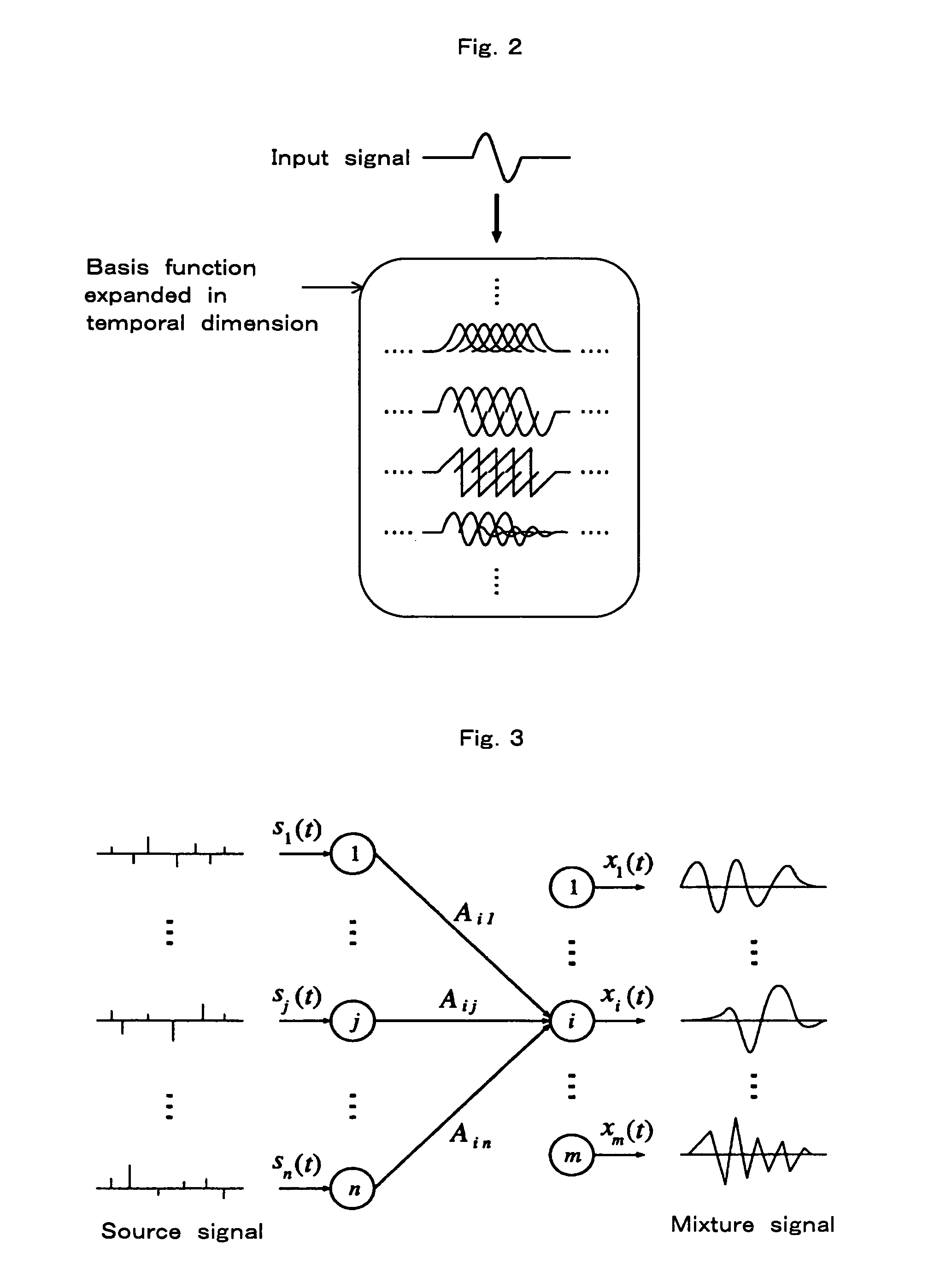Blind signal separation system and method, blind signal separation program and recording medium thereof
a signal separation and signal technology, applied in the field of blind signal separation system and method, can solve the problems of not being able to specifically obtain the value of the formula 3, the limitation of the number of mixture signals to be extracted, and the difficulty of integrating the calculation of formula 3 to acquire p(x|a)
- Summary
- Abstract
- Description
- Claims
- Application Information
AI Technical Summary
Benefits of technology
Problems solved by technology
Method used
Image
Examples
Embodiment Construction
[0046]As shown in FIG. 2, to suppress temporal movement of components constituting an input signal, the bases each having the same shape but different phase are prepared over the entire phase. In this manner, the components contained in the input signal to be analysed can be grasped properly on the bases by expanding the bases in temporal dimension, irrespective of the phase of components. Accordingly, there is an advantage that the property or feature of the temporally changing signal can be grasped correctly by considering the phase symmetry (temporal symmetry) in the bases, making the analysis of the signal more correct.
[0047]Hence, in order to solve the above-mentioned problem, the present invention introduces phase symmetry (temporal symmetry) into the bases and considers the mixture of signals with time delay in accordance with Lewickis' algorithm based on overcomplete representations, making it possible to separate the source signals from the mixture signals into which the so...
PUM
 Login to View More
Login to View More Abstract
Description
Claims
Application Information
 Login to View More
Login to View More - R&D
- Intellectual Property
- Life Sciences
- Materials
- Tech Scout
- Unparalleled Data Quality
- Higher Quality Content
- 60% Fewer Hallucinations
Browse by: Latest US Patents, China's latest patents, Technical Efficacy Thesaurus, Application Domain, Technology Topic, Popular Technical Reports.
© 2025 PatSnap. All rights reserved.Legal|Privacy policy|Modern Slavery Act Transparency Statement|Sitemap|About US| Contact US: help@patsnap.com



